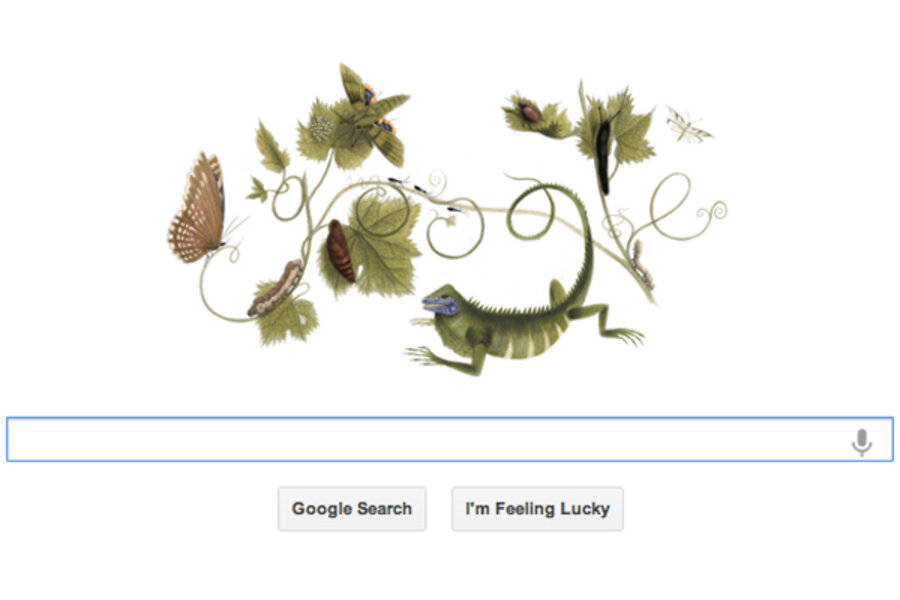Maria Sibylla Merian: Why her art changed how we see nature
Loading...
The Google homepage today depicts a range of natural forms – a lizard, a moth, and a slug among them – and a looping vine that spells out the Google name. The doodle is an homage to Maria Sibylla Merian, the German illustrator, who was born exactly 366 years ago today.
So why should we care about Merian all these centuries later? Well, as the website of the J. Paul Getty Museum puts it, Merian and her daughters (more on them later) were not just extremely talented artists. They were also pioneers who "raised the artistic standards of natural history illustration and helped transform the field of entomology."
Merian was raised in Frankfurt, in a relatively well-off household. Her father was a Swiss engraver named Matthäus Merian; after his death, in 1650, her mother remarried the still-life painter Jacob Marrel. She began painting insects from a young age, under the tutelage first of her father and then of her stepfather. Among her earliest works were images of moths, butterflies, and caterpillars.
"I collected all the caterpillars I could find in order to study their metamorphosis," she wrote at the age of 13. "I therefore withdrew from society and devoted myself to these investigations."
In 1665, Merian married Johann Andreas Graff, an apprentice to her stepfather, and the couple moved to Nuremberg. Their first daughter, Johanna Helena, was born in 1668; their second daughter, Dorotha Maria, arrived a decade later, in 1678.
Between 1675 and 1680, Merian's first book, "Neues Blumenbuch," or the "New Book of Flowers," was published sequentially, in three volumes. According to the Getty, copies of the "New Book of Flowers" became model books "for artists, embroiderers on silk, and cabinetmakers," and many of the editions that survive today are "heavily-used and often damaged."
In 1678, Merian returned to the subject of caterpillars, and began work on "Der Raupen wunderbare Verwandlung und sonderbare Blumennahrung" – "Caterpillars: Their Wondrous Transformation and Peculiar Nourishment from Flowers." That book, published in 1679, represented what has been called a "major advance in entomology."
The images in "The Caterpillar Book," as it is often called, were delicate and beautiful. They were also extremely accurate and scientifically astute.
From an online guide to a recent Getty exhibition on Merian:
By including the caterpillars' food sources in her natural history illustrations, Merian brought a more ecological approach to the study of metamorphosis.
Merian's work helped to disprove the common belief that insects reproduced by spontaneous generation from decaying matter such as old meat or rotten fruit, and her aesthetic sensitivity raised the standards of scientific illustration.
Merian's life would soon change drastically. In 1681, her stepfather died, and the entire Merian family fought viciously over his estate. Four years later, in 1685, Merian left her husband and took her two daughters to a Labadist religious commune, in the north of the Netherlands. By 1691, the commune had collapsed, and Merian was on her way to Amsterdam, where she and her daughters set up a studio.
In 1699, she traveled to Suriname, then a Dutch colony, with her youngest daughter, and eventually produced a book on the insects there – a book which brought her a good deal of fame. She died in 1717, at the age of 69.
For more tech news, follow us on Twitter @venturenaut.





